The new president says the U.S. doesn’t need Canada’s cars, lumber or oil. The numbers say otherwise
Article content
Article content
Article content
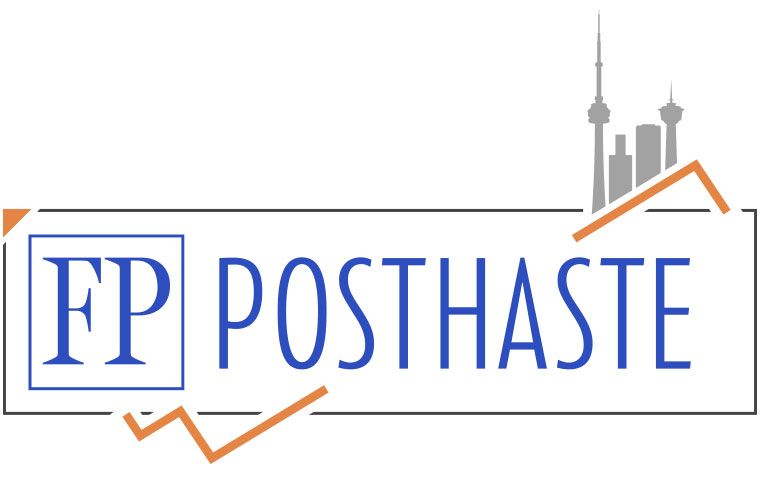
Donald Trump is saying a lot about the United States’ trading relationship with Canada that some economists say is just plain wrong.
Canadians thought the country had escaped the new president’s ire when he failed to launch a 25 per cent tariff on imports from Canada and Mexico to the U.S. on the first day of his administration. But before Jan. 20 was out, Trump identified Feb. 1 as the day when the tariff hammer could fall.
Advertisement 2
Article content
He went after Canada again on Thursday during a video call with attendees of the World Economic Forum.
“We have a tremendous deficit with Canada. We’re not going to have that anymore,” he said. “Canada has been very tough to deal with over the years and it’s not fair that we should have a $200 billion-$250 billion deficit. We don’t need them to make our cars … we don’t need their lumber … we don’t need their oil and gas.”
Here are five charts that counter Trump’s many claims about Canadian trade with its neighbour.
‘Massive deficit’
Trump has claimed on various occasions that the U.S. has a “massive” trade deficit with Canada, meaning Canada exports more to the U.S. than it imports.
“Canada is the largest export market for the U.S. and makes up one of the smallest trade deficits, owing largely to U.S. demand for energy-related products,” Toronto-Dominion Bank said in a research paper.
The U.S. shortfall with Canada will likely come in at around US$45 billion in 2024, when final figures are available, making it the “second-smallest” deficit compared with other trading partners, including China and Mexico, TD said. The U.S. recorded deficits with those countries of US$192 billion and US$130 billion, respectively, as of the third quarter of 2024.
Advertisement 3
Article content
As many economists have pointed out, were it not for energy, the U.S. would run a trade surplus.
But trade deficits aren’t just about the selling of goods and services.
“Trade deficits are inextricably linked to consumer spending, investments, and government deficits,” Hendrix Vachon, principal economist at Desjardins Group, said in a note this week.
Compared with other countries, American consumers spend more, accounting for approximately 70 per cent of gross domestic product (GDP) compared with 55 per cent for Canada, he said.
The U.S. government also spends less as a percentage of nominal GDP since it has lower tax rates and does not pay for a public health-care system the way Canada does.
The result is a growing current account deficit, which is the difference between a “country’s incomes” and consumer and government spending and investment.
“In reality, the United States won’t really be able to reduce its trade deficit unless it also chooses to reduce one of these three components,” Vachon said.
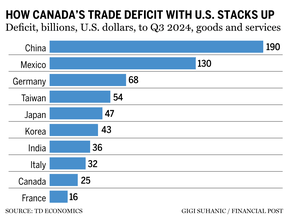
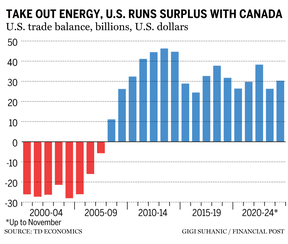
U.S. ‘subsidizes’ Canada
Trump has said the U.S. is “losing $200 billion a year” to Canada and characterized that figure as a subsidy.
Article content
Advertisement 4
Article content
It’s unclear what he’s referring to, though media outlets later reported it included U.S. military spending, which Canada benefits from, while the remainder is the trade deficit.
“But taking into consideration both the deficit and Canada’s military spending shortfalls still leads to a sizable gap vis-à-vis the $200-billion estimate,” TD economists Marc Ercolao and Andrew Foran said.
A true subsidy would exist if the U.S. was transferring US$45 billion — the expected value of the U.S. trade deficit with Canada in 2024 — to Ottawa’s coffers, which isn’t happening.
“A trade deficit is not a subsidy,” Ercolao and Foran said. “The trade deficit the U.S. runs with Canada reflects their economic outperformance and above-average spending of Americans that’s driving a hunger for energy products.”
Vachon, at Desjardins, also argues that if anything, the rest of the world is subsidizing the U.S., noting that its economy depends of “massive inflows of foreign capital” that come in the form of direct investments, portfolio investments including stocks and bonds, and other forms of investments.
Advertisement 5
Article content
Because of this, the U.S. has built up “sizable foreign liabilities.”
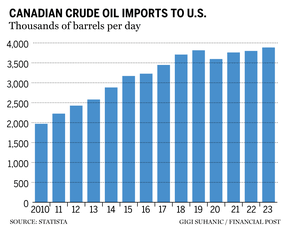
Bad break on autos
“Canada makes 20 per cent of our cars. We don’t need that. I’d rather make them in Detroit,” Trump told reporters at his Mar-a-Lago home in Florida in early January before he was officially appointed president.
Ercolao and Foran said that figure is exaggerated by about 10 percentage points.
It would be possible for the U.S. to move some of the production of the 1.5 million vehicles Canada annually exports south of the border, but it would create “significant near-to-medium-term challenges,” including increasing production by 10 per cent.
That, the economists estimate, would require the U.S. to build six new manufacturing plants based on the production at existing facilities of 225,000 vehicles a year.
“Full onshoring of all non-U.S. production would require a 75 per cent boost in U.S. production and more than US$50 billion in new investment,” they said.
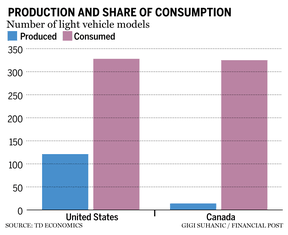
The U.S. doesn’t need anything from Canada
Trump has repeatedly said the U.S. doesn’t need Canada’s oil, lumber or cars that are manufactured here.
Advertisement 6
Article content
Then, there are critical minerals, the TD economists say.
China produces more than 50 per cent of the critical minerals that are needed to manufacture everything from cellphones to artificial intelligence chips to defence industry products.
The U.S., which keeps a 50-item critical minerals list, is a net importer of 43 of those minerals.
“Canada has been supplying 50–80 per cent of (the U.S.’s) needs in zinc, tellerium, nickel and vanadium, with “abundant reserves” of cobalt, graphite, lithium and other metals, Ercolao and Foran said.
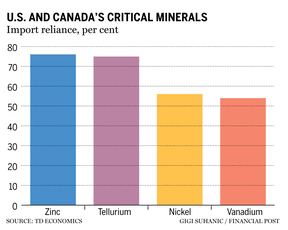
The upshot
“Even with this data, it’s proven insufficient to fend off trade attacks that will extend well beyond this current bout. The lesson that should be learned in Canada is that there can be no guarantee against future tariff attacks,” Ercolao and Foran said.
Sign up here to get Posthaste delivered straight to your inbox.

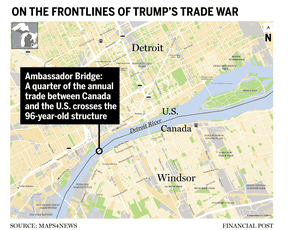
If a trade war gets fought, it is going to be places such as Windsor on the frontlines — not Ottawa or Washington D.C. The city is tethered to the United States by a 96-year-old, Art Deco-style, American-owned 2.3-kilometre-long suspension bridge spanning the Detroit River. — Joe, O’Connor, Financial Post
Advertisement 7
Article content
Read the full story here.

- Today’s data: United States existing home sales
- Earnings: American Express Co., Verizon Communications Inc.

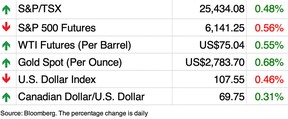


Personal finance tools, technologies, and policies have changed significantly over the past five, 20, and 35 years. However, the basics of managing your money successfully are as relevant today as they were when our grandparents came of age decades ago. Credit counsellor Sandra Fry lays out the foundation of sound money management.
Calling Canadian families with younger kids or teens: Whether it’s budgeting, spending, investing, paying off debt, or just paying the bills, does your family have any financial resolutions for the coming year? Let us know at wealth@postmedia.com.
McLister on mortgages
Want to learn more about mortgages? Mortgage strategist Robert McLister’s Financial Post column can help navigate the complex sector, from the latest trends to financing opportunities you won’t want to miss. Read them here
Advertisement 8
Article content
Financial Post on YouTube
Visit Financial Post’s YouTube channel for interviews with Canada’s leading experts in economics, housing, the energy sector and more.
Today’s Posthaste was written by Gigi Suhanic, with additional reporting from Financial Post staff, The Canadian Press and Bloomberg.
Have a story idea, pitch, embargoed report, or a suggestion for this newsletter? Email us at posthaste@postmedia.com.
Recommended from Editorial
Bookmark our website and support our journalism: Don’t miss the business news you need to know — add financialpost.com to your bookmarks and sign up for our newsletters here.
Article content
5 charts challenge Trump’s tariff tirade against Canada
2025-01-24 13:00:03





